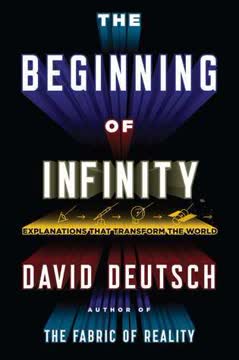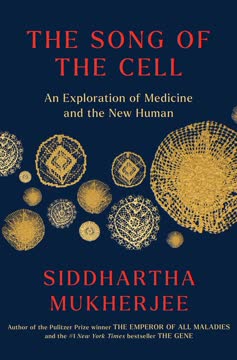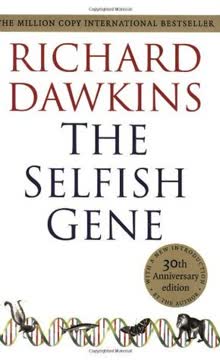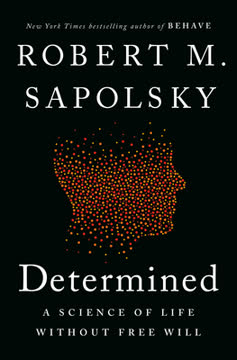نکات کلیدی
1. تفکر انسانی از طریق همکاری و قصد مشترک تکامل یافته است
تفکر انسانی، بداههپردازی فردی است که در یک ماتریس اجتماعی-فرهنگی تنیده شده است.
دیدگاه تکاملی: فرضیهی قصد مشترک پیشنهاد میکند که تفکر انسانی در پاسخ به نیاز به هماهنگی اجتماعی تکامل یافته است. این فرآیند در دو مرحله کلیدی رخ داد:
- قصد مشترک: انسانهای اولیه توانایی تشکیل اهداف مشترک و توجه مشترک با شرکای خاص را توسعه دادند.
- قصد جمعی: انسانهای مدرن کنوانسیونها، هنجارها و نهادهای گروهی را ایجاد کردند.
این سازگاریها منجر به شکلهای جدیدی از نمایندگی شناختی، استنتاج و خودنظارت شد و قصد فردی شبیه به میمونها را به شیوههای منحصر به فرد تفکر انسانی تبدیل کرد. بنابراین، تکامل شناخت انسانی از تکامل اجتماعی و همکاری انسانی جداییناپذیر است.
2. میمونهای بزرگ دارای شناخت فردی پیشرفته و درک اجتماعی هستند
شناخت و تفکر میمونهای بزرگ به این شیوه زندگی اجتماعی، اما نه چندان همکاریآمیز، سازگار شده است.
قصد فردی: میمونهای بزرگ در سه حوزه کلیدی تواناییهای شناختی پیشرفتهای را نشان میدهند:
- نمایندگی شناختی: آنها از مدلهای تصویری و طرحوارهای برای درک محیط خود استفاده میکنند.
- استنتاجهای علّی و قصدی: میمونها میتوانند استنتاجهای منطقی درباره رویدادهای فیزیکی و اجتماعی انجام دهند.
- خودنظارت رفتاری: آنها فرآیندهای تصمیمگیری خود را ارزیابی میکنند.
با این حال، شناخت میمونهای بزرگ عمدتاً برای رقابت و نه همکاری سازگار شده است. آنها دیگران را به عنوان عاملان قصدی درک میکنند اما در قصد مشترک یا ارتباط همکاریآمیز به شیوهای که انسانها انجام میدهند، شرکت نمیکنند.
3. انسانهای اولیه برای فعالیتهای همکاریجویانه قصد مشترک را توسعه دادند
قصد مشترک انسانهای اولیه و تفکر دوم شخصه یک شکاف رادیکال را نمایان میسازد، نوع جدیدی از رابطه بین اجتماعی بودن و تفکر.
حل مسئله همکاریجویانه: قصد مشترک به عنوان انسانهای اولیه با چالشهای اکولوژیکی جدیدی که نیاز به همکاری برای بقا داشت، ظهور کرد. این منجر به:
- تشکیل اهداف مشترک با نقشهای فردی
- توسعه توجه مشترک با دیدگاههای فردی
- ایجاد ساختار دو سطحی از اشتراک همزمان و فردیت
این سازگاریها به انسانهای اولیه اجازه داد تا اقدامات و توجه خود را به طور مؤثرتری هماهنگ کنند و منجر به شکلهای جدیدی از حل مسئله همکاریجویانه و تعامل اجتماعی شود. این درگیری "دوم شخصه" پایهگذار اشکال پیچیدهتری از اجتماعی بودن و شناخت انسانی بود.
4. ارتباط همکاریآمیز برای هماهنگی اقدامات و دیدگاهها ظهور کرد
انسانها، اما نه دیگر پریماتها، در ارتباطات خود همکاری میکنند تا برای دیگران آسانتر شود که دیدگاه آنها را بپذیرند و حتی اگر بخواهند آن را دستکاری کنند.
ارتباط غیرکلامی: انسانهای اولیه اشکال جدیدی از ارتباط همکاریآمیز را عمدتاً از طریق اشاره و نمایش ایجاد کردند. این نیازمند:
- پذیرش دیدگاه دیگران
- انجام استنتاجهای اجتماعی بازگشتی
- شرکت در خودنظارت اجتماعی
ارتباط همکاریآمیز به انسانهای اولیه اجازه داد تا اقدامات خود را هماهنگ کرده و اطلاعات را به طور مؤثرتری به اشتراک بگذارند. این همچنین منجر به تواناییهای شناختی جدیدی شد، مانند ظرفیت نمایندگی نمادین و توانایی استدلال درباره حالات ذهنی دیگران.
5. انسانهای مدرن از طریق شیوههای فرهنگی قصد جمعی را ایجاد کردند
انسانهای مدرن از صفر شروع نکردند بلکه از همکاری انسانهای اولیه آغاز کردند.
ذهنیت گروهی: انتقال به شناخت انسانی مدرن شامل:
- توسعه هویت گروهی و زمینه فرهنگی مشترک
- ایجاد شیوههای فرهنگی و هنجارهای متعارف
- ظهور نهادهای اجتماعی با نقشها و وضعیتهای پذیرفته شده جمعی
این قصد جمعی به انسانها اجازه داد تا با غریبهها هماهنگ شوند و جوامع بزرگمقیاس ایجاد کنند. همچنین منجر به توسعه دیدگاههای "عینی" و تفکر هنجاری شد، زیرا افراد استانداردها و انتظارات گروه را درونی کردند.
6. زبان متعارف اشکال جدیدی از استدلال و تفکر را ممکن ساخت
ارتباط زبانی متعارف به کودکان در حال توسعه یک سیستم نمایندگی پیشساخته از روشهای جایگزین مفهومسازی ارائه داد و همه در زمینه فرهنگی مشترک گزینههای موجود را میدانستند.
نوآوریهای زبانی: توسعه زبان متعارف چندین پیشرفت کلیدی شناختی را به همراه داشت:
- ایجاد ساختارهای زبانی انتزاعی و محتوای گزارهای
- توانایی بیان ایدههای پیچیده، از جمله حالات ذهنی و عملیات منطقی
- توسعه استنتاجهای رسمی و عملی
- تسهیل تفکر بازتابی و گفتگوی درونی
زبان به انسانها اجازه داد تا ایدههای پیچیدهتری را منتقل کنند و در اشکال جدیدی از استدلال شرکت کنند. همچنین یک سیستم نمایندگی مشترک را فراهم کرد که میتوانست برای هر دو ارتباط و تفکر فردی استفاده شود.
7. تفکر انسانی به طور بنیادی تحت تأثیر تعاملات اجتماعی و فرهنگی قرار دارد
انسانها به طور بیولوژیکی ظرفیتهای اساسی خود را برای ساخت نمایندگیهای شناختی منحصر به فرد انسانی، اشکال استنتاج و خودنظارت از تعاملات همکاریجویانه و ارتباطی خود با دیگر موجودات اجتماعی به ارث میبرند.
شناخت اجتماعی: توسعه تفکر انسانی به شدت با تجربیات اجتماعی و فرهنگی در هم تنیده است:
- مهارتهای شناختی از طریق فعالیتهای همکاریجویانه و ارتباطات ظهور میکنند
- شیوههای فرهنگی و آثار فرهنگی یادگیری و توسعه فردی را تسهیل میکنند
- تعاملات اجتماعی شکلدهنده نحوه نمایندگی و استدلال افراد درباره جهان هستند
این دیدگاه تأکید میکند که شناخت انسانی صرفاً محصول توسعه فردی مغز نیست، بلکه به طور بنیادی تحت تأثیر تعاملات اجتماعی و فرهنگی در طول زندگی قرار دارد.
8. تفکر عینی و هنجاری از دیدگاههای گروهی ظهور کرد
استدلال انسانی، حتی زمانی که به طور داخلی با خود انجام میشود، بنابراین به نوعی هنجارمندی جمعی آغشته است که در آن فرد اقدامات و تفکر خود را بر اساس هنجارها و استانداردهای گروه تنظیم میکند.
خودمدیریت هنجاری: ظهور تفکر عینی و هنجاری شامل:
- توسعه دیدگاههای بیطرف، "عینی"
- درونیسازی هنجارهای اجتماعی و استانداردهای گروه
- ایجاد معیارهای مشترک برای عقلانیت و حقیقت
این فرآیند به انسانها اجازه داد تا درباره مفاهیم انتزاعی استدلال کنند و در اشکال پیچیدهای از استدلال و تصمیمگیری شرکت کنند. همچنین منجر به توسعه نهادهای فرهنگی مانند علم، قانون و فلسفه شد.
9. رشد فردی نقش حیاتی در توسعه شناخت انسانی ایفا میکند
در غیاب یک محیط اجتماعی، این ظرفیتها به دلیل عدم استفاده از بین میروند، مانند ظرفیت بینایی در فردی که به طور کامل در تاریکی به دنیا آمده و بزرگ شده است.
دیدگاه توسعهای: توسعه شناخت انسانی شامل:
- تعامل با مراقبان و همسالان از اوایل نوزادی
- قرار گرفتن در معرض آثار فرهنگی، شیوهها و زبان
- درونیسازی تدریجی هنجارهای اجتماعی و فرهنگی
این فرآیند توسعه برای ظهور تواناییهای شناختی منحصر به فرد انسانی حیاتی است. بدون ورودی اجتماعی و فرهنگی مناسب در طول توسعه، افراد قادر به توسعه دامنه کامل ظرفیتهای شناختی انسانی نخواهند بود و این امر نقش اساسی تعامل اجتماعی در شناخت انسانی را برجسته میکند.
آخرین بهروزرسانی::
FAQ
1. What is A Natural History of Human Thinking by Michael Tomasello about?
- Exploration of Human Cognition: The book investigates what makes human thinking unique, focusing on the evolutionary and developmental roots of our cognitive abilities.
- Social Cooperation as Key: Tomasello argues that human thinking evolved primarily through social cooperation, distinguishing us from other primates.
- Two-Step Evolutionary Process: The narrative centers on the emergence of joint intentionality and collective intentionality as the two major evolutionary steps that transformed primate cognition into complex, culturally embedded human reasoning.
- Integration of Multiple Perspectives: The book combines evolutionary theory, developmental psychology, and comparative studies with great apes to explain the origins of human cognition.
2. Why should I read A Natural History of Human Thinking by Michael Tomasello?
- Comprehensive Evolutionary Account: Tomasello provides a detailed, evidence-based explanation of how human thinking evolved, filling a gap in our understanding of human uniqueness.
- Interdisciplinary Insights: The book bridges psychology, anthropology, linguistics, philosophy, and evolutionary biology, offering a rich, multifaceted view of cognition.
- Clarifies Complex Concepts: Key ideas like joint intentionality, collective intentionality, and normative self-governance are explained clearly, making the book accessible to a broad audience.
- Challenges Common Assumptions: Tomasello’s arguments challenge simplistic views of intelligence and highlight the centrality of social cooperation in cognitive evolution.
3. What are the key takeaways from A Natural History of Human Thinking by Michael Tomasello?
- Cooperation as Cognitive Foundation: Human cognition is deeply rooted in cooperative sociality, with shared intentionality shaping the evolution of thinking, communication, and culture.
- Two-Step Evolutionary Model: The transition from individual intentionality to joint, and then collective intentionality, explains the emergence of uniquely human cognitive abilities.
- Culture and Norms as Integral: Culture and social norms are not just external influences but are integral to the structure of human thinking, enabling objectivity, reflection, and norm-governed reasoning.
- Language as a Capstone: Language and conventional communication are seen as products of earlier adaptations for shared intentionality, not the starting point of human cognition.
4. How does Michael Tomasello define and explain "shared intentionality" in A Natural History of Human Thinking?
- Core Hypothesis: Shared intentionality is the capacity to form joint goals, share attention, and coordinate actions and intentions with others, creating a "we" perspective.
- Evolutionary Steps: Tomasello distinguishes between joint intentionality (dyadic collaboration) and collective intentionality (group-mindedness), both of which are unique to humans.
- Cognitive Transformation: These adaptations enable perspectival thinking, recursive inference about others’ mental states, and normative self-monitoring.
- Foundation for Culture: Shared intentionality underpins the development of language, culture, and social norms.
5. What are "joint intentionality" and "collective intentionality" in Tomasello’s theory, and how do they differ?
- Joint Intentionality: This is the ability to form joint goals and coordinate roles with specific partners, involving second-personal engagement and recursive perspective-taking.
- Collective Intentionality: This involves group-mindedness, where social norms, conventions, and institutions are collectively created and enforced, enabling coordination with large groups and strangers.
- Key Differences: Joint intentionality is dyadic and second-personal ("I-you"), while collective intentionality is agent-neutral and applies to "anyone" in the group.
- Cognitive and Social Impact: Joint intentionality fosters collaboration and symbolic representation; collective intentionality leads to objective, normative, and institutional thinking.
6. How does Tomasello contrast human thinking with great ape cognition in A Natural History of Human Thinking?
- Great Ape Cognition: Apes possess individual intentionality, flexible problem-solving, and some social cognition, but their sociality is mainly competitive.
- Human Joint Intentionality: Humans evolved the ability to form joint goals, share attention, and engage in cooperative communication, which apes lack.
- Collective Intentionality and Culture: Only humans developed group-mindedness, social norms, and institutions, enabling large-scale cooperation and objective reasoning.
- Qualitative Shift: These evolutionary steps represent a qualitative transformation in cognition, not just a quantitative increase in intelligence.
7. What are the three key components of thinking according to Tomasello’s framework in A Natural History of Human Thinking?
- Cognitive Representation: The ability to create abstract, off-line models of situations, including representing multiple perspectives simultaneously.
- Simulation and Inference: The capacity to simulate potential actions and outcomes, making causal, intentional, and logical inferences, especially about others’ mental states.
- Self-Monitoring: The ability to evaluate and regulate one’s own thinking and behavior, anticipating others’ evaluations and introducing normative self-governance.
8. How does A Natural History of Human Thinking explain the emergence of conventional communication and language?
- From Gestures to Conventions: Early humans used natural, iconic gestures for coordination, which evolved into conventionalized, normatively enforced linguistic signs.
- Cultural Common Ground: Communication became explicit and obligatory within groups, relying on shared cultural knowledge and expectations.
- Arbitrariness and Abstraction: Over time, gestures became stylized and arbitrary, allowing for abstract and flexible conceptualization.
- Linguistic Constructions: Complex linguistic patterns emerged, enabling creative conceptual combination and the framing of experiences in conventional ways.
9. What role do social norms and institutions play in human thinking according to Michael Tomasello?
- Social Norms as Standards: Norms are agent-neutral standards that regulate behavior based on collective evaluations, enforced by group members.
- Normative Self-Monitoring: Humans internalize norms, leading to self-regulation and concern for public reputation, even when personal preferences differ.
- Institutions as Constitutive Norms: Institutions create new social realities by establishing roles and powers through collective agreement and symbolic marking.
- Objective Social Facts: Institutional facts are objective yet observer-relative, existing because of collective intentionality and normative enforcement.
10. How does Tomasello describe the development of reflective thinking and reasoning in humans in A Natural History of Human Thinking?
- Discourse and Explicitation: Language allows individuals to make implicit thoughts explicit, enabling self-reflection and perspective-taking.
- Reason-Giving Practices: Shared decision-making requires providing reasons and justifications, fostering cooperative argumentation and logical consistency.
- Internalization of Social Reasoning: Social processes of giving and evaluating reasons become internalized as individual reasoning, creating a web of beliefs governed by community standards.
- Normative Governance: Reflective reasoning is shaped by social norms and collective intentionality, ensuring rational discourse and self-monitoring.
11. What is agent-neutral thinking in Tomasello’s theory, and how does it relate to objectivity?
- Agent-Neutral Perspective: Modern humans adopt a generic viewpoint that applies norms and conventions impartially to any group member, not just specific individuals.
- Objectivity as Social Construct: Objectivity arises from group-mindedness, generalizing perspectives into a sense of external reality through collective agreement.
- Role of Language and Institutions: Language and institutions reinforce objectivity by making norms and facts explicit and public.
- Cognitive Consequences: Agent-neutral thinking enables conventional, propositional representations and transforms cognition from individual to collective frameworks.
12. What is the role of ontogeny (development) in the emergence of uniquely human thinking according to A Natural History of Human Thinking?
- Developmental Sequence: Children first develop joint intentionality skills (joint attention, joint goals) around their first year, followed by collective intentionality (understanding norms, conventions) around age three.
- Necessity of Social Environment: Rich social and cultural interaction is essential for developing these cognitive adaptations; isolation prevents their emergence.
- Biological and Cultural Interaction: Shared intentionality is a biological adaptation that requires cultural nourishment and extended human ontogeny for full development.
- Mirroring Evolutionary History: The ontogenetic sequence in children reflects the evolutionary steps outlined in Tomasello’s theory.
نقد و بررسی
کتاب تاریخ طبیعی تفکر انسانی نظریهی توماسلو را ارائه میدهد که بر اساس آن، شناخت انسانی از طریق تعاملات اجتماعی تعاونی تکامل یافته و از نیت فردی به نیت مشترک و سپس به نیت جمعی توسعه یافته است. خوانندگان ایدههای کتاب را جذاب و به خوبی با شواهد تجربی، به ویژه مقایسههای بین میمونها و کودکان انسان، پشتیبانی شده یافتند. بسیاری از رویکرد بینرشتهای توماسلو که از روانشناسی، انسانشناسی و فلسفه بهره میبرد، تمجید کردند. با این حال، برخی سبک نوشتاری آکادمیک و متراکم و تکراری بودن آن را مورد انتقاد قرار دادند. به طور کلی، منتقدان آن را اثری مهم و اندیشهبرانگیز دربارهی منشأ شناخت انسانی دانستند، با وجود طبیعت چالشبرانگیزش.















